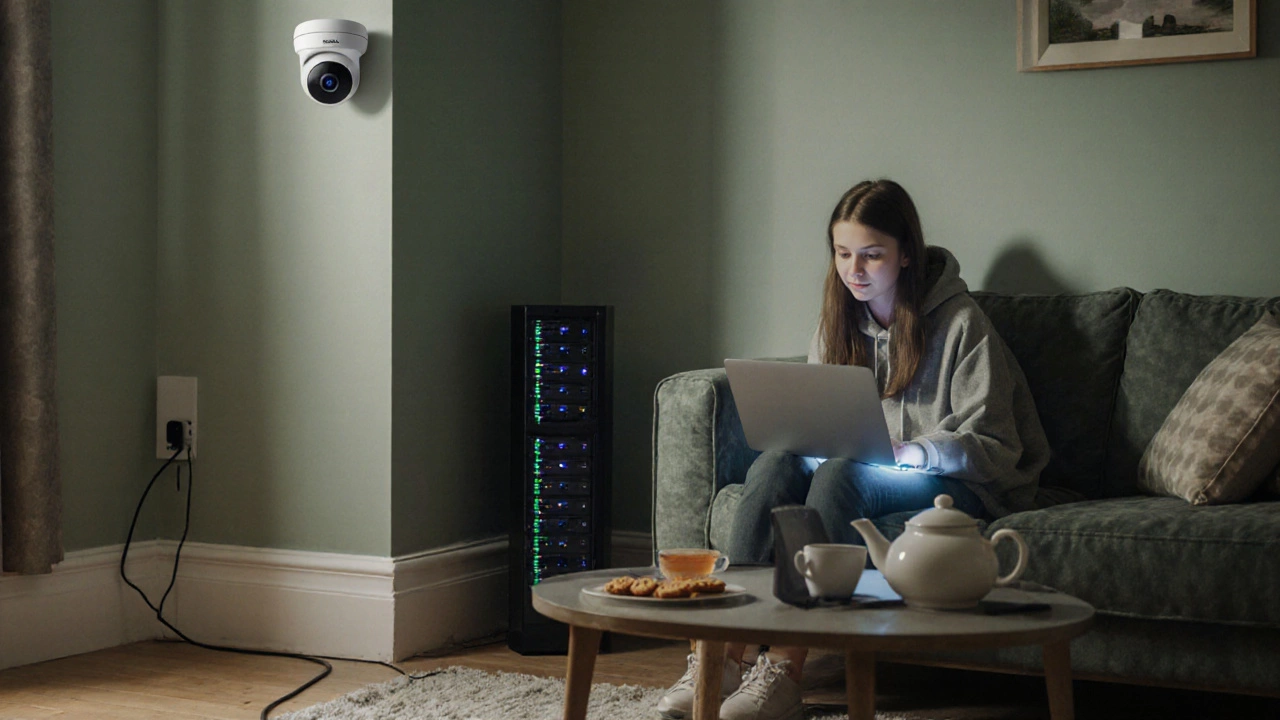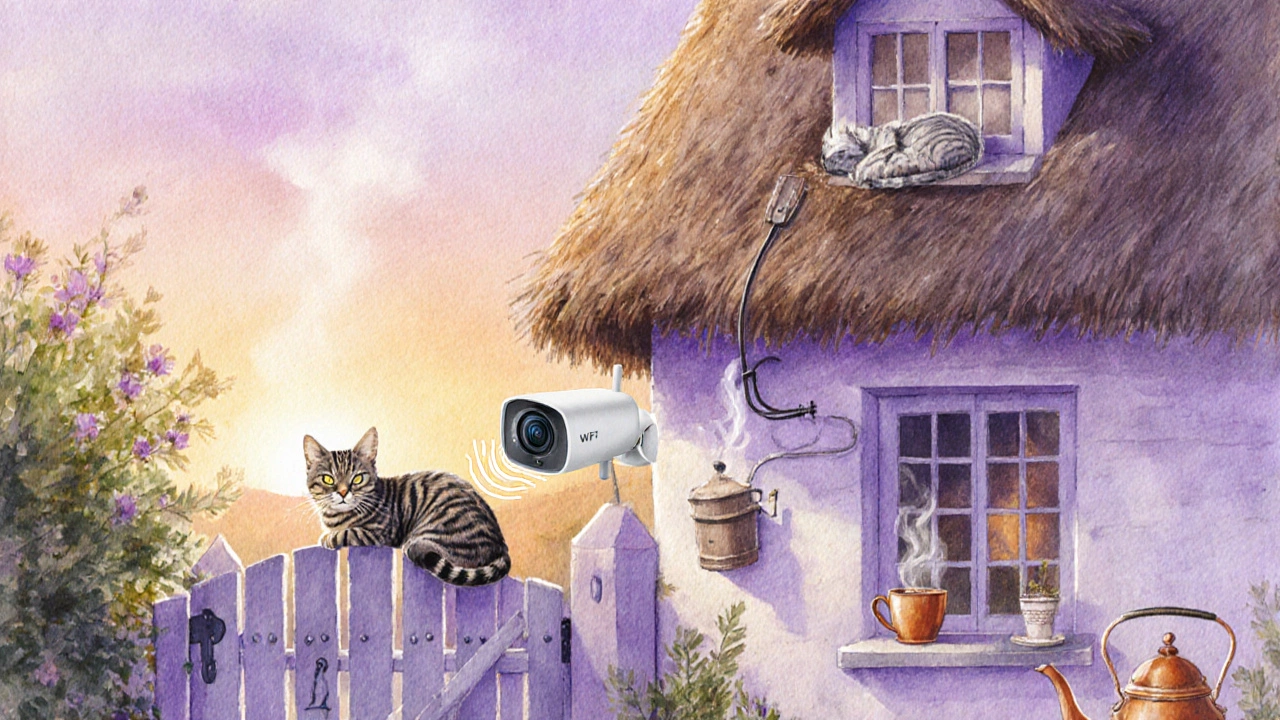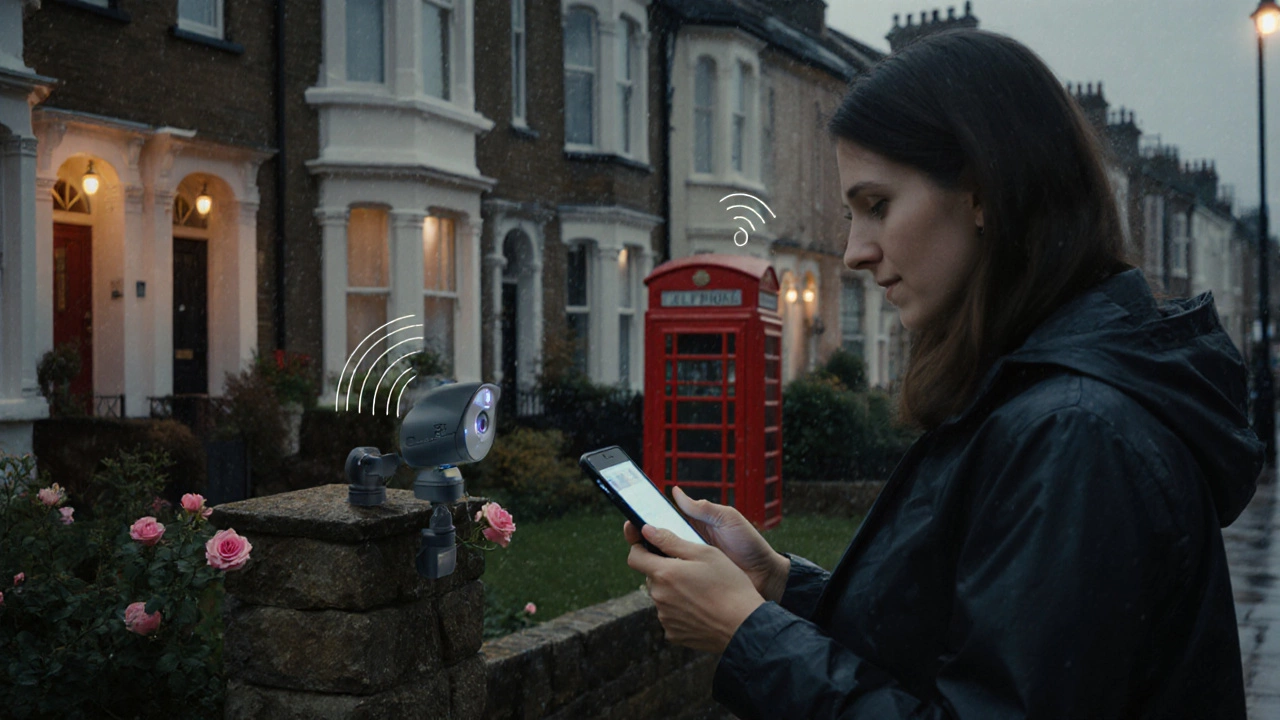Security Camera Connection Type Selector
Answer the questions below to determine if your security camera needs Wi-Fi:
When you start looking at a home‑security kit, the first question that pops up is often, “Do all security cameras need Wi‑Fi?” The short answer is no - many cameras work perfectly fine without a wireless connection, but the right choice depends on your wiring, bandwidth, and how you want to store the footage.
TL;DR
- Wi‑Fi‑only cameras need a strong, stable wireless network and a power source.
- Wired Ethernet cameras (including PoE) get power and data over a single cable, no Wi‑Fi.
- Hybrid models can switch between Wi‑Fi and Ethernet, giving flexibility.
- Local storage (SD card or NVR) works without the cloud; cloud storage still needs internet.
- Choose based on distance from router, internet reliability, and budget.
Below we walk through the main camera families, explain the technical trade‑offs, and give you a quick decision checklist.
What Exactly Is a Security Camera?
Security Camera is a video‑capture device designed to monitor and record activity in a defined area, typically for safety or surveillance purposes. Modern security cameras range from simple indoor box cameras to rugged outdoor dome models with night vision, facial‑recognition AI, and two‑way audio. Their core job stays the same: turn light into pixels, store the pixels, and let you view them when you need to.
Wi‑Fi vs. Wired: The Big Divide
Think of Wi‑Fi as the invisible highway that carries video from the camera to your phone or cloud. If the road gets jammed, the video stutters or drops. Wired, on the other hand, uses a physical cable that rarely slows down - but you need to run that cable.
Wi‑Fi‑Only Cameras
Wi‑Fi a wireless networking technology that uses radio waves to transmit data between devices over short‑range distances cameras are the most plug‑and‑play. You mount the unit, plug it into power, and let the app guide you through adding it to your home network. They’re perfect for renters or people who cannot drill through walls.
- Pros: Easy installation, flexible placement, usually integrates with smart‑home hubs.
- Cons: Dependent on router distance, suffers from interference (microwaves, neighbors' Wi‑Fi), may need a power outlet for each unit.
Wired Ethernet Cameras
Ethernet a family of networking standards that connect devices via twisted‑pair cables, offering high‑speed, reliable data transfer cameras receive both data and, in many cases, power through the same cable. This is called Power over Ethernet (PoE).
Power over Ethernet (PoE) a method that delivers electrical power along with data over standard Ethernet cabling, eliminating the need for a separate power source lets you place a camera up to 100meters away from the nearest switch without worrying about a power outlet.
- Pros: Stable bandwidth, no Wi‑Fi dead zones, can power multiple cameras from one switch.
- Cons: Requires cable runs, may need a PoE injector or switch, higher upfront cost.
Hybrid Cameras - Best of Both Worlds?
Hybrid models let you start with Wi‑Fi for quick setup, then snap a Ethernet cable later if you need more reliability. They often auto‑switch when a cable is detected, so you don’t have to re‑configure the device.
How Cameras Store Video: Local vs. Cloud
Storage choice isn’t tied to Wi‑Fi, but it influences whether you need an internet connection.
Local Storage Options
- SD Card a removable flash memory card used to store video locally within the camera - cheap, easy to swap, but limited in capacity.
- Network Video Recorder (NVR) a dedicated device that stores video streams from IP cameras on a hard drive or SSD - centralizes footage for many cameras, works over Ethernet only.
- Digital Video Recorder (DVR) a recording unit that receives analog video signals from CCTV cameras and converts them to digital files - still common for older analog setups.
Cloud Storage
Many Wi‑Fi cameras bundle a subscription that uploads clips to a secure server. While you can access footage from anywhere, the upload process needs a steady internet connection. If your ISP throttles uploads, you’ll see lag or missed motion events.

Comparing the Main Camera Types
| Feature | Wi‑Fi‑Only | Wired (PoE) | Hybrid |
|---|---|---|---|
| Installation effort | Low - no cables | Medium - run Ethernet | Low to medium - start wireless, add Ethernet later |
| Power source | Plug‑in outlet | PoE switch or injector | Either outlet or PoE |
| Network reliability | Variable - depends on signal strength | High - wired link | High when wired, variable when wireless |
| Bandwidth usage | Shared Wi‑Fi bandwidth | Dedicated Ethernet lane | Both possible |
| Typical cost (per camera) | $50‑$150 | $100‑$250 (incl. PoE switch) | $80‑$200 |
| Best for | Renters, quick installs | Permanent setups, high‑traffic zones | People who want flexibility |
Decision Checklist - Do You Really Need Wi‑Fi?
- Is there a stable router within 30feet of each camera? If not, Wi‑Fi may struggle.
- Do you have Ethernet cabling or are you willing to hire a low‑voltage electrician?
- Will you rely on cloud storage, or do you prefer an SD card/NVR on‑site?
- Are you comfortable paying a monthly cloud fee, or would a one‑time hardware purchase suit you better?
- Do you need power at the camera location? If the spot lacks an outlet, PoE or battery‑powered Wi‑Fi units are the only options.
Answering these questions quickly narrows the field. If you have a solid Ethernet backbone and want rock‑solid uptime, skip Wi‑Fi altogether. If you’re a renter with limited drilling permission, a Wi‑Fi camera with an SD card will do the job.
Common Pitfalls & How to Avoid Them
- Overloading the Wi‑Fi network. A single 1080p stream can use 2‑4Mbps. Multiple cameras multiply that demand. Use Quality‑of‑Service (QoS) settings to prioritize video traffic.
- Choosing the wrong power source. Battery‑powered Wi‑Fi cameras sound alluring but often need a recharge every few weeks. For long‑term deployments, PoE or wired AC power is more reliable.
- Ignoring firmware updates. Security flaws in camera firmware can expose your network. Set auto‑updates or schedule monthly checks.
- Forgetting to secure the wireless network. Change default passwords, enable WPA3, and consider a dedicated SSID for cameras only.
Future Trends - Will Wi‑Fi Lose Its Spot?
Wi‑Fi 6E and the upcoming Wi‑Fi 7 promise higher throughput and lower latency, making wireless cameras more viable for high‑resolution 4K streams. At the same time, Ethernet standards continue to push 10Gbps over longer distances, keeping wired solutions relevant for enterprise‑grade installations.
In the next few years you’ll see more hybrid systems that default to Wi‑Fi but automatically switch to a PoE link when it becomes available - a true “best‑of‑both” approach.
Quick Recap
If you need a camera that works anywhere, Wi‑Fi is the easiest path, but you’ll pay in reliability and bandwidth. Wired PoE cameras give you rock‑solid performance but demand cable runs. Hybrid models let you start small and grow your infrastructure later. The key is matching the camera’s connectivity to your home’s layout, internet health, and storage preferences.

Frequently Asked Questions
Can a Wi‑Fi camera work without an internet connection?
Yes. Most Wi‑Fi cameras can record to an SD card locally, so you’ll still capture video even if the internet drops. However, you won’t receive push notifications or remote live view until connectivity returns.
Do PoE cameras need a separate power outlet?
No. PoE delivers both data and power through the same Ethernet cable, so a single switch or injector supplies everything. You only need a power source for the switch itself.
Is a cloud subscription mandatory for Wi‑Fi cameras?
Not always. Some brands offer local storage options like micro‑SD cards, while others bundle cloud as a premium feature. Check the spec sheet to see if a cloud‑only plan is required.
What bandwidth does a 1080p camera need on Wi‑Fi?
A typical 1080p stream consumes around 2‑4Mbps with H.264 compression. If you have motion‑triggered recording, the average usage drops because the camera only streams when there’s activity.
Can I mix Wi‑Fi and wired cameras in the same system?
Absolutely. Most modern security platforms let you add IP cameras via Ethernet and Wi‑Fi using the same app. Just make sure the app supports both types and that you allocate enough network bandwidth for the wired units.

